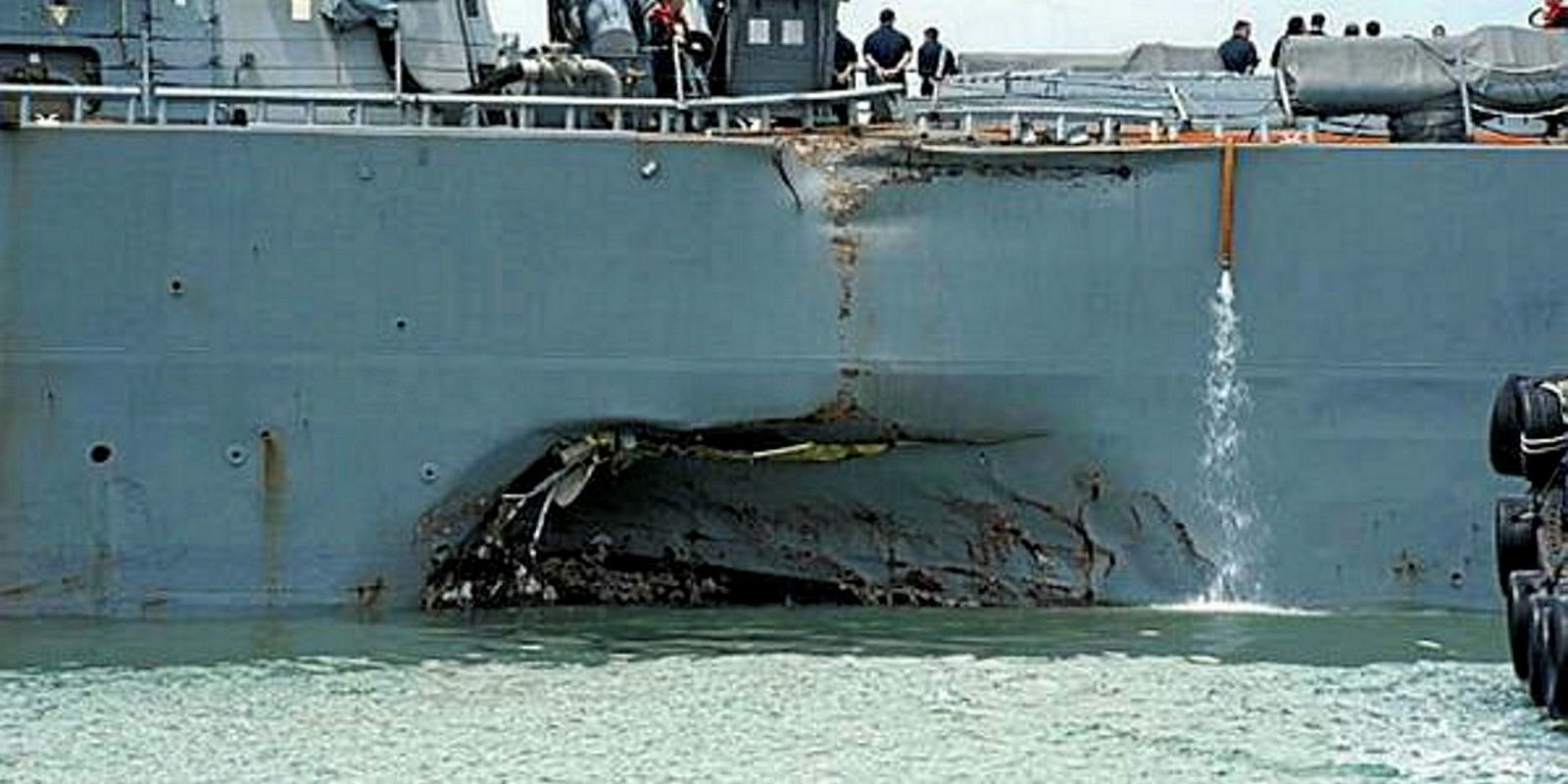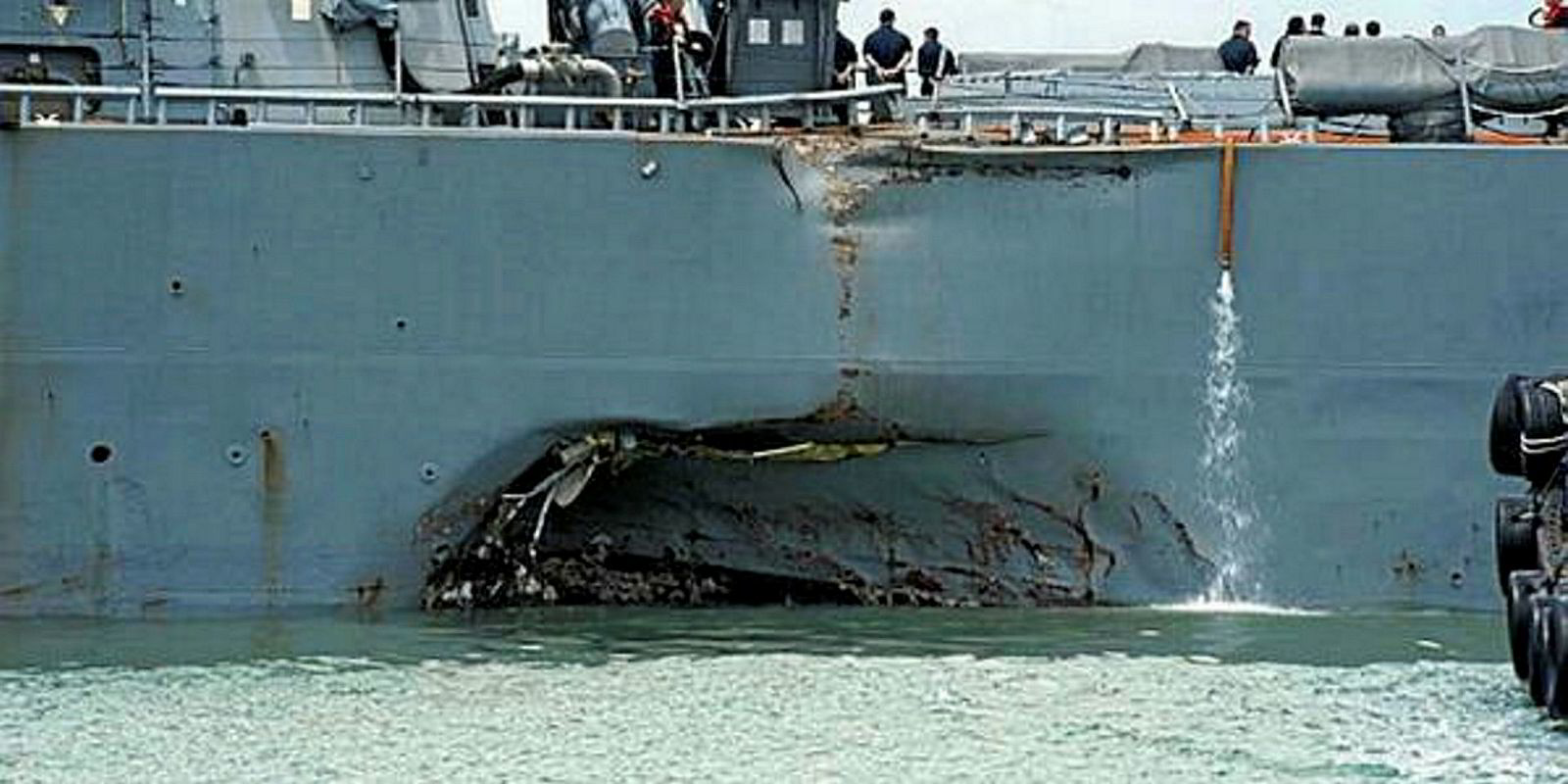Confusion about steering control on the US naval vessel John S McCain has been blamed for a fatal collision with a Stealth Maritime tanker off Singapore last year.
The warship collided with the 50,800-dwt MR Alnic MC (built 2008) near Horsburgh Lighthouse on 21 August, killing 10 US sailors.
An investigation by Singapore's Transport Safety Investigation Bureau (TSIB) found that John S McCain made a sudden turn to port into the path of the tanker because of a series of missteps that took place after propulsion controls were transferred.
The confusion also led to an unintentional reduction of the port engine throttle which increased the rate of the port turn.
The warship's crew "did not recognise the processes involved in the transfer of propulsion and steering control," TSIB said.
"The crew were likely to have lacked the requisite knowledge of the steering control system due to inadequacies in training and familiarisation."
Transfer of control
John S McCain's difficulties began with the transfer of propulsion control from the “Helm” station to “Lee Helm” station.
Until then Helm had been controlling the steering of the vessel and concurrently handling the propulsion of the vessel.
When the commanding officer noted the helmsman struggling to perform both tasks, he ordered the propulsion to be taken over from him.
"While this unplanned shift was not abnormal, it was not properly executed, and resulted in the transfer of steering control from Helm to Lee Helm," TSIB said.
When the helmsman was not able to steer the ship from his console, he did not recognise that steering control had been transferred to Lee Helm, and mistakenly believed the vessel had lost steering, setting in train the fatal events.
Bridge team lacking
The report said that when Alnic MC's bridge team saw the warship turning, it presumed it would safely pass ahead.
The collision happened within three minutes of the port turn. "Actions taken by Alnic MC were insufficient to avoid the collision," TSIB said.
It found the bridge team was not manned in accordance with company's SMS, and the master did not have full support on the bridge.
The bridge team initially comprised four persons, as required by the SMS for a bridge watch Level II.
"However, the SMS required that for a transit through the Singapore Strait, the bridge was to be manned by an additional person, ie a total of five persons," the report said.
One officer went down to his cabin, leaving three on the bridge.
The second officer was performing paperwork in the chart room and was not involved in the navigation or providing assistance to the bridge team.
TSIB said: "It is not clear why the company’s internal audits and the master’s navigational audits prior to the collision did not reveal a noncompliance with the SMS on bridge watch levels, especially since the master claimed this particular transit was no different from his past transits."
Stealth Maritime has since increased its oversight of its managed ships and is considering implementing remote VDR-auditing to assess the effectiveness of its SMS on board ships.
The company has also reviewed its SMS to ensure prescribed requirements for safety of navigation are adhered to, and taken measures to ensure effective bridge team management on board its vessels.






